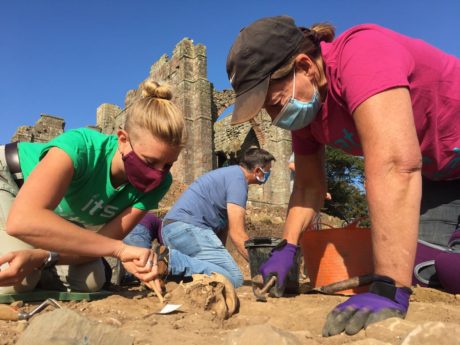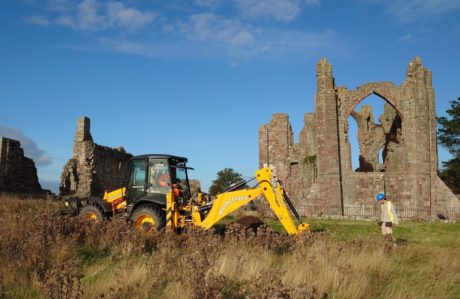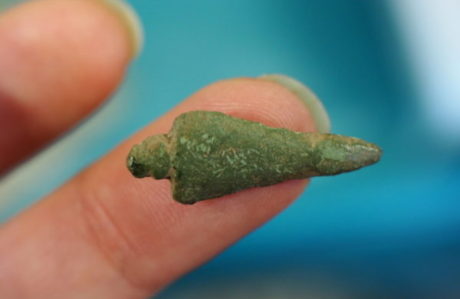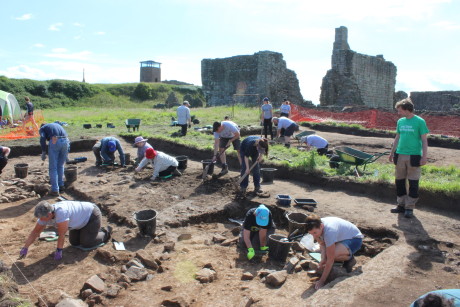
Lindisfarne is one of the most iconic Anglo-Saxon sites in English history, famous for being the first place in the British Isles to be attacked by Vikings. Over the last three seasons, we’ve made some impressive discoveries, and as we continue to excavate, we’re starting to unpick the island’s story, getting deeper into its history.
What kind of trace has it left? What can we pick up from this long-buried past? Here’s a quick recap of some of our best discoveries so far.
1. White quartz pebbles
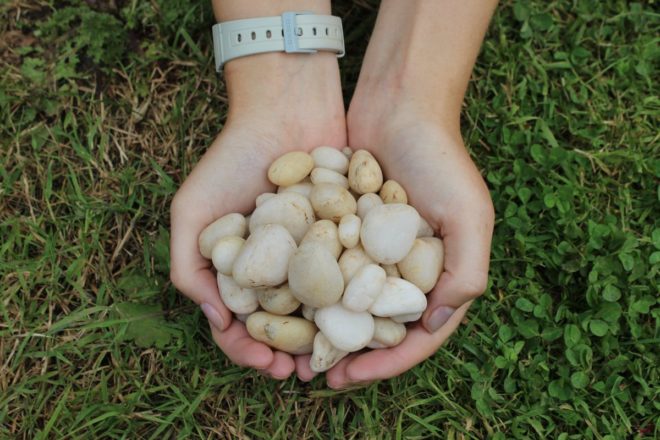
Over our three years of excavation so far, we’ve been finding these white quartz pebbles in and around our Anglo-Saxon graves. We’ve found HUNDREDS of quartz pebbles. People have put them on graves (like we would put flowers) ever since the Bronze Age. Everyone on site is captivated by them – they’re so enchanting, and they almost seem to glow. We’re pretty sure that they were intentionally placed in the graves – they don’t occur naturally in the surrounding soils. Thanks to some of our more determined Venturers, we know that you can occasionally find them at the low-tide mark. At the very least, this means people were going down to the shore to collect the pebbles at low-tide, and bringing them up to be placed in the cemetery, either at the time of burial, or on top of the graves. Remarkably, it’s not a practice that’s mentioned in the literature as far as we can see. It’s evidence of an ancient burial ritual that only archaeology, and not literature, can reveal.
2. Half an Anglo-Saxon sculpture, Lindisfarne
We 👏 just 👏 found 👏 half 👏 a 👏 carved 👏 stone 👏 and 👏 guess 👏 what 👏 it 👏 fits 👏 back 👏 together 👏 with 👏 one 👏we 👏 found 👏 last👏 year 👏
WITNESS IT
#LindisfarneDig pic.twitter.com/f8NICbKTpi— DigVentures (@TheDigVenturers) September 12, 2018
What’s better than finding one Anglo Saxon sculpture? Finding half! During this year’s excavation, DigVentures’ crowdfunders unearthed the other half of an Anglo-Saxon sculpture that had been found several years ago. As soon as the two pieces were reunited, it became instantly possible to see the whole design – three crosses in the Irish style, which suggests they may have been made during the very early days of the monastery, while it was still under Irish influence.
3. Not one, not two, but THREE Anglo-Saxon namestones
In Season 1 (2016), we unearthed our very first namestone. These rare, Anglo-Saxon carvings are unique to the north east. Inscribed with the name of the person they commemorate, some are written in Latin script, others with runes, and some with both. Ythfrith. In Season 3 (2018), we found two more. Neither is complete, but we think one may begins with Gis*, while the other may end in *uini (meaning friend). They are each stylistically different, but all bear some common elements – like a central cross. If you’re interested in these carvings, check out our Etched in Stone online exhibition.
4. Early Christian burials
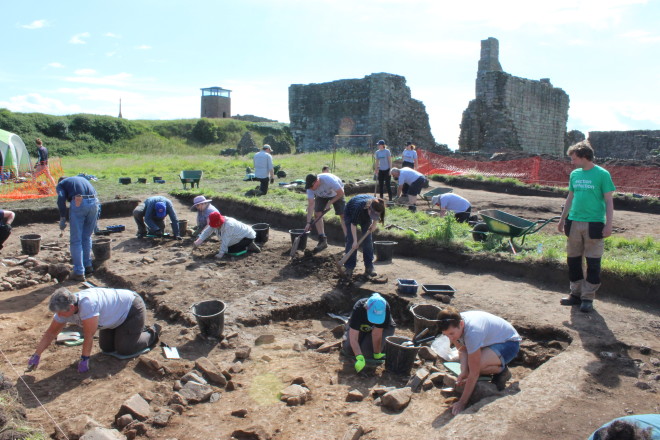
Our main area of excavation has clearly undergone many different uses over the centuries. Among the remains of buildings, there are lots of burials – some are intact, but others have been scattered across the site when new buildings were constructed, or when the field was later ploughed. So far, we can tell that the human remains span different ages, sexes, and centuries. We have men, women and children, some of which date to the 8th and 9th centuries, others of which have been dated to the 11th century. Some are healthy, some seem less than well-nourished, while others clearly have terrible dental hygiene (there’s a LOT of plaque). Given the range of people we have buried here, and the centuries they span, we suspect that this cemetery may have been for the lay population, not just the monastic one, and it gives us a good cross section of the community living on the island before, during and after the Viking raids.
5. Ovens?
![]()
The three-year search for some of the original buildings from the Anglo-Saxon monastery that may have sheltered monks around the time of the Viking raids may finally have come up trumps. These ovens had the potential to reveal what kinds of things St Cuthbert and his peers were up to. A bakery? A smithy? After throwing all sorts of high tech analysis at it, you can imagine the surprise when, at the bottom, the excavation team found a skeleton. After an initial ‘whaaaaaaat???’ moment, we quickly realised that the skeleton had not in fact been placed in the oven. Instead, all the clues pointed to the grave having been dug long after the oven had gone out of use and forgotten about – the skeleton had ended up being buried in a grave that was dug into what had once been an oven quite by chance… a marvelous example of the forensic power of archaeological field methods to unpick events with incredible accuracy.
6. An Anglo-Saxon building
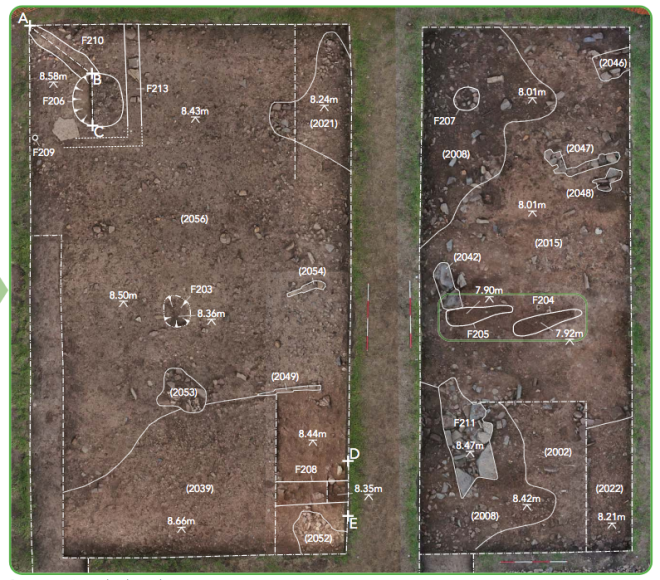
Whether or not the huge circular pits are ovens, they were found among the remains of an even earlier building. Last season, we managed to uncover just one corner of it, and found two large, circular pits inside, which we *think* may have been ovens, and a few pieces of pumice stone. We know it was eventually abandoned, because there were some more recent graves cut right through it. If we can uncover the rest of it, we think we’ll have a pretty good chance of finding more evidence that can tell us exactly what this building was for. Was it a home? A workshop? Or a place of worship? That’s what we hope to find out!
